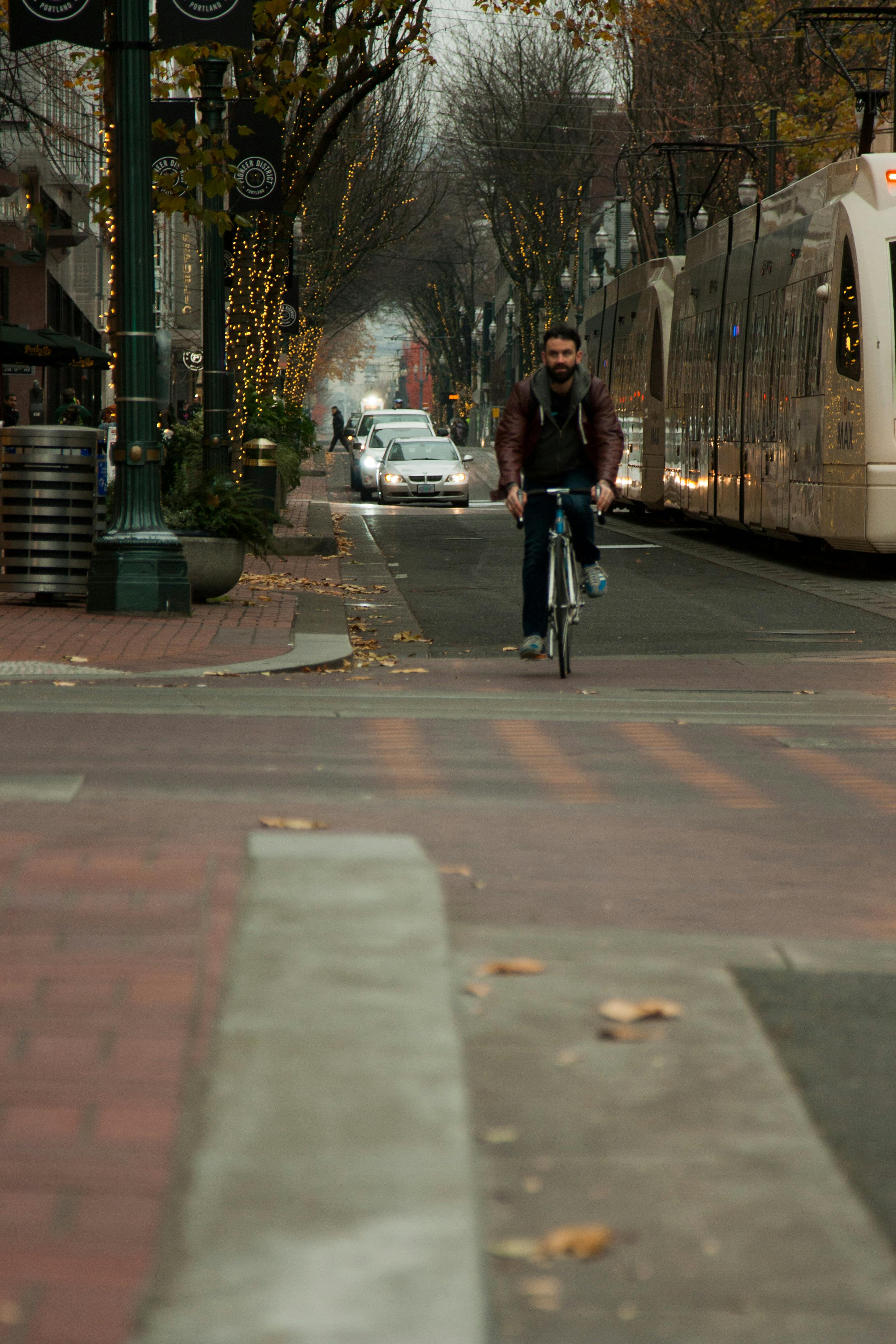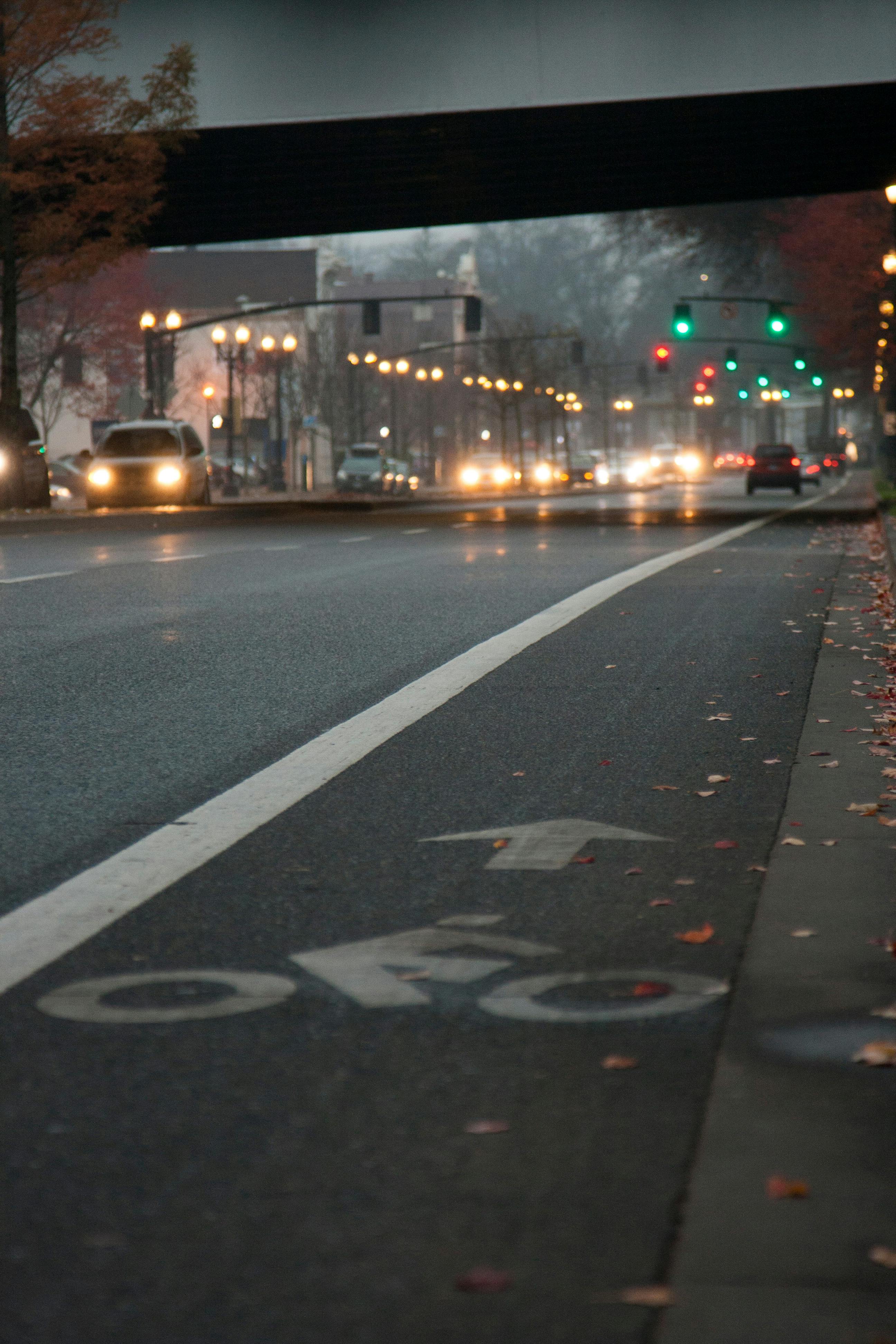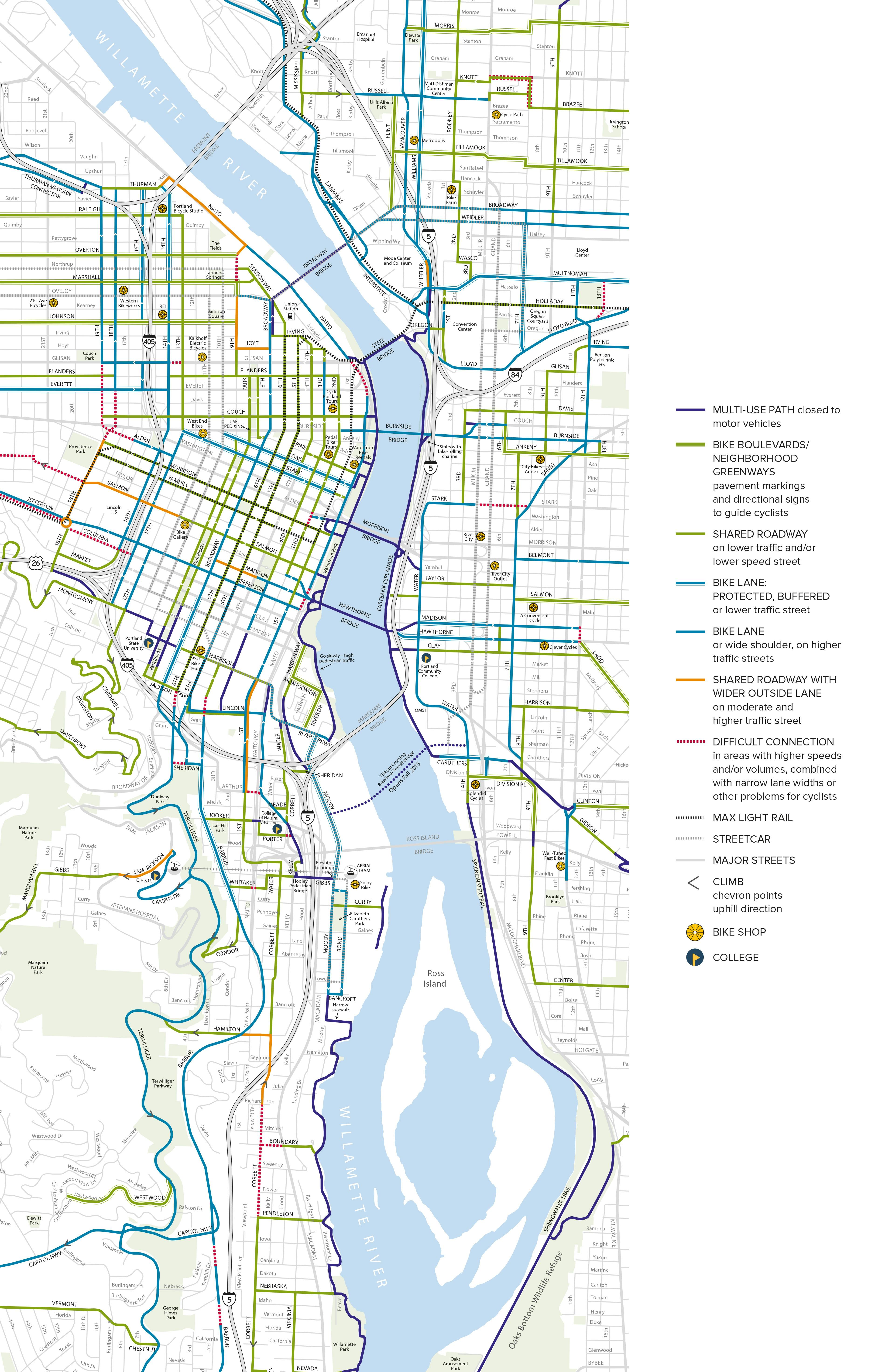Portland bicycle plan for 2030
In 2030, Portland wants to see bikes everywhere. This is how they are going to do it.

Text: Silje Strømmen
Photos: Mari Oshaug
In 2014, Portlanders set a record for bike commuting with 7,2 percent of commuters choosing to bike to work. An increase of 27 % from the year before, Portlanders continues to use bikes at the highest rate of any major city in the US. That is no coincidence.
“Today’s record rate of bike commuting is a result of decades of investment in projects that make it safer for people to use bikes and programs that encourage people to try biking”, Portland Transportation Director Leah Treat said in a news release regarding the record in September 2015.
Portland first plan for how the city wanted to work with bicycles was passed in the early 70s and the city has systematically been working towards getting more people on bikes ever since. However, in 1990, only 0.01 % of people rode a bike to work. Even by 2000 the number was only 1.6 %. Portland’s first Bicycle Master Plan was adopted by City Council in 1996 and updated in 1998. The plan created a cost-effective blueprint for developing an interconnected bicycle network supported by innovative policies and programs to encourage bicycling. In the period between its publication and the completion of the new plan, Portland expanded its bikeway network to more than 300 miles, developed many effective programs to promote bicycling, added thousands of bicycle parking spaces and experienced an exponential rise in the number of people bicycling. In 2008, the League of American Bicyclists recognized these efforts when Portland was granted platinum-level status as a Bicycle Friendly Community. By 2004 the number of bike commuters had grown to 2,6 % and by 2013 the bike commute rate had rose to 5,9 %.
While the numbers weren’t too different from what could be seen in other cities at the time, they were evidence of biking being on the rise.

On February 11, 2010, Portland’s City Council unanimously adopted The Portland Bicycle Plan for 2030. In it, the Portland Bureau of Transportation (PBOT) states The Portland Bicycle Plan for 2030 positions Portland for the tremendous growth in bicycling that the City expects over the next 20 years: ”A major theme of the new plan is that the City must plan and design for people who are not yet riding, and must create conditions that make bicycling more attractive than driving for short trips”.
- The Portland Bicycle Plan for 2030 has a few main points, Roger Geller, Bicycle Coordinator with the Portland Office of Transportation, explains:
- One was just the idea of building a really dense, cohesive network that will be appropriate for people of all ages and abilities. We just want to create safe, comfortable conditions, he continues, and explains that when developing a plan, PBOT borrowed quite liberally from the Dutch bicycle design principles, which includes safety, comfort, directness, cohesiveness and attractiveness.
- We are not building for people who necessarily self identity as a “cyclist”. We are building for this large part of the population that just want to go from A to B, the group “interested but concerned”. If we can create conditions where the bicycle is their first choice, then we are kinda there. We have policy goals that say we should reach 25 % bicycle modal split.
In many ways, the Portland Bicycle Plan for 2030 has become a framework for understanding where Portland is going. The level of community involvement when first putting the plan together was huge, and today residents are able to look up what they can expect to happen in their neighborhood.
An important part of the plan is the Recommended Bikeway Network map, which allows those who are interested to see what is happening and understand where it came from.
“Our intentions are to be as sustainable a city as possible. That means socially, that means environmentally and that means economically. The bike is great on all three of those factors. You just can’t get a better transportation return on your investment than you get with promoting bicycling”, Portland Mayor Sam Adams is quoted saying in the ”vision” chapter of the bicycle plan.
Reflected in the recommendations presented in the Portland Bicycle Plan, the key is to make bicycling more attractive than driving for trips up to three miles or less.

- Our understanding is “we need to make conditions for bicycling so good, that you feel no less comfortable getting onto a bike than getting into a car”, Bicycle Coordinator Geller announce:
- In fact, you (will) feel more comfortable getting on a bike because there are all these native advantages to bicycling. The key is, always has been, and will continue to be, to build infrastructure that facilitates a really connected system. When we think about whom we are designing for, we think about designing for a 12-year old. We want a 12-year old to be able to independently navigate through the city by bicycle. We know that you are much more likely to bike and walk if you do it as a child. It is really just the idea of “if we want our kids to bike, we really need to design our systems so that they can actually do it in a way that is safe for them, and that their parents feel good about”.
Portland’s Safe Route to School program is only one of the many activities that the city commissions in order to inspire people of all ages to pick up a bike and start riding. Going forward, Geller suggests that the priority is divided equally between focusing on providing services where they are currently lacking, and focusing in improving the quality of services in high-populated areas with a high number of short trip distances. As for the latter, the Central City 2035 project will be key as to improving the quality of biking into areas where there are a lot of destinations and by so capture a lot of the trips. Nevertheless, on of the most interesting parts of Portland’s approach to biking, and something that is reflected in the bike plan is this: biking should be something natural. Or as Bicycle Coordinator Geller explains it:
- We try to get away from referring to people who bike as “bicyclist”. It is now “people who ride bikes”; you are first a person, who just happens to be using a bike (as your way of transportation), because it makes sense.
Sources:
Portland Bureau of Transportation, Portland Bicycle Count Report 2013-2014 and Portland Bicycle Plan for 2030.